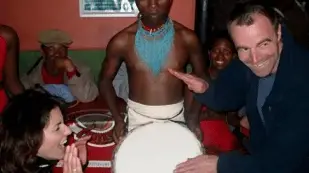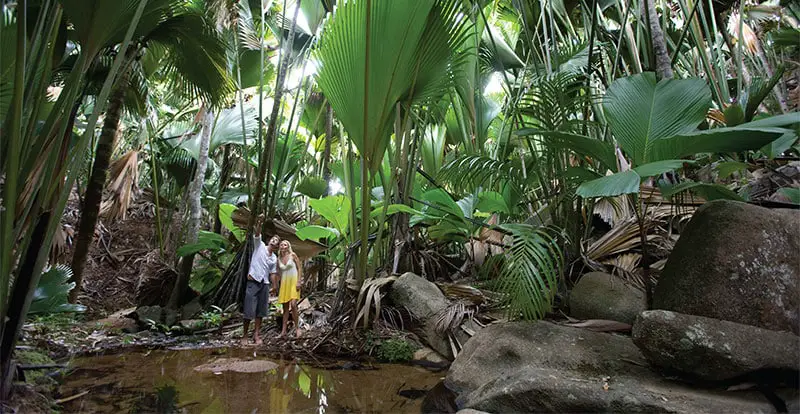Accessible Tourism Manual
In the context of the trilateral agreement between UNWTO, ONCE and ENAT, an update of the 2005 UNWTO Recommendations on “Accessible Tourism for All” (see page 20 in the Tourism Tattler March 2015 magazine edition) was approved by the UNWTO General Assembly at its 20th session in August 2013, and culminated in a 20 page Manual on Accessible Tourism.
This article provides an executive summary of the Manual, for which a download link is provided at the end.
THE MANUAL ON ACCESSIBLE TOURISM FOR ALL:
PRINCIPLES, TOOLS AND GOOD PRACTICES
Persons with disabilities are participating more and more frequently in tourism activities as a result of their growing level of economic and social integration. However, there remain many impediments and barriers of all kinds that hinder normalized access to tourism goods and services.
Accessibility is not a requirement exclusively for the benefit of persons with disabilities, as they are not its only beneficiaries; tourism destinations that take heed of these requirements and those that understand them as positive measures will see their product and service offerings evolve, thus facilitating the tourism experience and improving the quality of life of all their residents and visitors.
The idea of providing tools for the implementation and efficient management of accessibility in tourism destinations was the basis of a collaboration agreement signed between the World Tourism Organization (UNWTO), the ONCE Foundation for Cooperation and the Social Integration of People with Disabilities, and the European Network for Accessible Tourism (ENAT) in 2011.
One of the results of this collaboration – among other actions – has been the publication of this manual, which provides a series of recommendations for ensuring that all persons can access, use and enjoy tourism environments and services on an equal footing and regardless of their capabilities.
The recommendations set out in this manual constitute guidelines of action that were drawn from experience, academic studies and international standards, as well as from technological and scientific advances that have been made in this field. In the creation of this manual, the ONCE Foundation has brought to bear its extensive professional experience of over 25 years in carrying out projects related with the implementation of Universal Accessibility and Design for All in different settings and services.
This endeavour also enjoyed the support of ENAT, in which the ONCE Foundation holds the vice-presidency.
This manual offers a reference framework for the actions, tools and resources that are necessary for the provision of services and the management of accessible tourism. Through these instruments, the UNWTO aims to encourage the key stakeholders of the tourism sector to implement measures that will result in greater participation by different groups of people in tourism activity, including persons with disabilities, among others.
The publication is divided into five separate sections, each addressing principal issues regarding accessibility in tourism: context, recommendations, main areas of action, indicators for national tourism administrations, and good practices at the international level.
The first section establishes theoretical foundations and discusses the barriers to accessibility that can be found in tourism- related activities.
It describes the wide range of beneficiaries of accessible tourism, highlighting the emergence of “senior tourists”, whose tourism activity is similar or even greater than that of other population segments, and whose needs and demands require accessibility measures. This first section also provides a breakdown of the economic impact of accessibility in tourism and a set of statistical data backing up the fact that accessibility, in addition to being a right, is also a business opportunity.
The second section presents recommendations in accordance with the specifications of Design for All, based on the most current standards including ISO FDIS 21542 on ‘Building Construction – Accessibility & Usability of the Built Environment’. These recommendations constitute the necessary foundation to create accessible tourism destinations and place special emphasis on the value chain of accessibility in tourism, to which end five key points are discussed: planning and information, transport, accessibility to the environment, accessibility to common spaces, and accessibility to specific spaces. Each sub-section responds to the accessibility needs of different tourism environments, ranging from hotels, information offices and sports facilities, to natural environments, beaches, and transport, among others.
The third section reviews the areas of action that constitute the cornerstone of success in achieving accessible tourism and is directed towards those responsible for the management of tourism destinations. These areas of action concretely involve five key points: (1) legislation, highlighting the need for its existence with regard to equal rights, (2) research, as a starting point for knowing the impact of accessible tourism, (3) awareness- raising and training, in formal and professional education plans, (4) promotion of product offerings through marketing strategies, and (5) management, as an element that is applicable to all tourism sectors, so that it becomes a practice that is maintained over time.
The fourth section of the manual discusses a series of indicators, meant for the use of national tourism organizations, so that they can assess the progress of accessibility in tourism destinations. These indicators, accompanied by the corresponding methodology for their application, constitute an unprecedented contribution in the field of the management and evaluation of accessibility in tourism.
The last section of the manual presents a selection of good practices that will serve as examples for stakeholders interested in implementing and replicating accessibility improvements in tourism. The ONCE Foundation, together with ENAT, conducted a study based on diverse sources and proven experiences, which made it possible to put together a selection of outstanding examples, categorized by both geographic area and tourism sub-sector.
The Manual on Accessible Tourism for All: Principles, Tools and Good Practices was born of the necessity to have a reference document for the tourism sector that offers the indispensable guidelines for achieving accessibility in destinations in the most efficient and best-planned manner possible.
It is one of the first manuals of the World Tourism Organization to provide a global overview of accessibility, which is – like tourism – a cross-cutting and international activity.
The ONCE Foundation has applied its professional and real-life experience in accessible tourism to the content of this manual. In this regard, it is worth noting the work the Foundation has done in the organization of four editions of the International Congress of Tourism for All, the creation of more than 700 accessibility plans in municipalities, various actions related with accessibility in transport, including the implementation of assistance services, as well as its support to and collaboration with numerous accessible tourism initiatives in both the public and private spheres.
The outcome of this project is a tool that will allow the different stakeholders to understand accessibility needs in the tourism sector, to become aware of the competitive advantage provided by its implementation, and to obtain information to enable them to carry out appropriate measures to promote accessibility as an added value and as a factor of quality.
Download the Manual on Accessible Tourism for All: Principles, Tools and Good Practices at http://dtxtq4w60xqpw.cloudfront.net/sites/all/files/docpdf/exec-summary-accessible-tourism-principles.pdf

Or download the QuadPara Association of South Africa (QASA) ‘Sawubona Disability’ booklet ‘Myths, Manners, Do’s & Don’ts about Disability’ at: www.issuu.com/tourismtattler/docs/qasa_disability_booklet-tourism_tattler.



